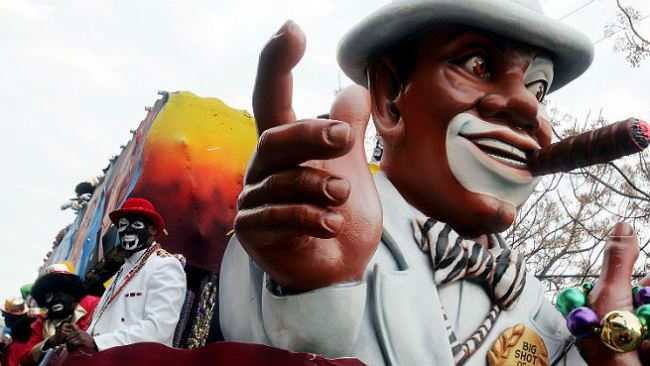Blackface: In 2012, blackface is still popular around the world from Japan to the Netherlands
Share
Explore Our Galleries
Breaking News!
Today's news and culture by Black and other reporters in the Black and mainstream media.
Ways to Support ABHM?
By Lori L. Tharps, The Grio
It’s 2012. Why are we still talking about blackface?

It’s true there has never been an official ban on blackface put forth by our national government, but as Americans we’ve pretty much agreed that when white people smear their face with black make-up and paint their lips a cherry red in imitation of black people, it’s offensive.
In fact, since the 1960s, blackface has officially been placed on the list of taboo topics most people know to avoid like the plague. Of course, not everyone read the memo. Like Ted Danson in that infamous Friars Club fiasco back in 1993 or the boys in upstate New York last week — yes last week — who thought donning blackface would make for a funny skit at their high school while a re-enacting the Chris Brown-Rihanna domestic violence incident.
And then of course, there’s the rest of the world. Outside of the United States, blackface and sambo imagery is still all the rage.
From Mexico to South Africa, in Sweden and in Germany, it is not uncommon to find what we in the United States would consider racist images of black people being used on product labels and in advertising for everything from popsicles to chocolate candies. And then there are the countries where donning blackface is actually a regular part of the cultural experience.
Read more here.











Comments Are Welcome
Note: We moderate submissions in order to create a space for meaningful dialogue, a space where museum visitors – adults and youth –– can exchange informed, thoughtful, and relevant comments that add value to our exhibits.
Racial slurs, personal attacks, obscenity, profanity, and SHOUTING do not meet the above standard. Such comments are posted in the exhibit Hateful Speech. Commercial promotions, impersonations, and incoherent comments likewise fail to meet our goals, so will not be posted. Submissions longer than 120 words will be shortened.
See our full Comments Policy here.